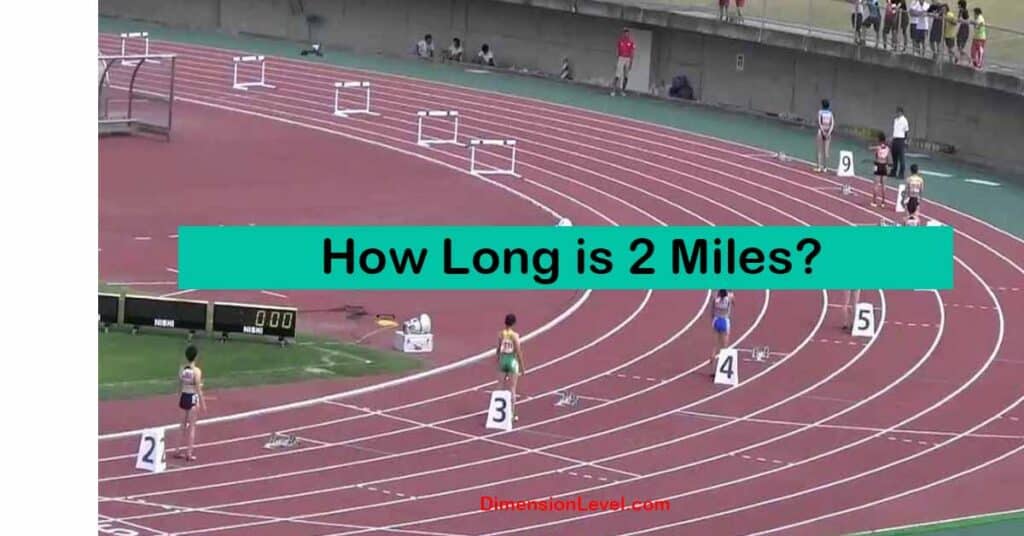Have you ever wondered just how long two miles really is? Whether you’re planning a quick jog, a leisurely stroll, or just curious about spatial relationships, understanding the length of 2 miles can be both fun and practical.
In this comprehensive guide, we’ll explore 10 mind-bending comparisons that’ll give you a fresh perspective on this common distance. Buckle up for a journey through city blocks, sports fields, and even iconic landmarks!
The Nitty-Gritty: Breaking Down 2 Miles
Before we dive into our eye-opening comparisons, let’s get a handle on the basics. Two miles is a distance that pops up frequently in our daily lives, but what does it really mean?
- 2 miles = 3.22 kilometers
- 2 miles = 3,218.69 meters
- 2 miles = 10,560 feet
- 2 miles = 3,520 yards
“The journey of a thousand miles begins with one step.” – Lao Tzu
While Lao Tzu was talking about much longer journeys, the same principle applies to our 2-mile adventure. It’s all about perspective and breaking things down into manageable chunks.
Why Do We Use Miles?
The mile has a long and winding history, dating back to Roman times. The word “mile” comes from the Latin “mille passus,” meaning “thousand paces.” A Roman mile was 1,000 paces or 5,000 Roman feet. Today’s statute mile, which we’re using for our 2 miles journey, was standardized in Britain in 1593 and later adopted by the United States.
How Long is 2 Miles to Walk?
Walking time is a crucial factor when considering a 2-mile journey. On average, it takes about 30-40 minutes to walk 2 miles at a moderate pace. However, several factors can influence this:
- Your walking speed
- Terrain (flat vs. hilly)
- Weather conditions
- Your fitness level
- Whether you’re carrying anything
| Walking Pace | Time to Walk 2 Miles |
| Slow (2 mph) | 60 minutes |
| Moderate (3 mph) | 40 minutes |
| Brisk (4 mph) | 30 minutes |
Health benefits of a 2-mile walk are numerous. It can:
- Burn around 200 calories
- Improve cardiovascular health
- Boost mood and reduce stress
- Strengthen bones and muscles
The Impact of Terrain on Walking Time
It’s important to note that the terrain can significantly affect your walking time. Walking 2 miles on flat ground is quite different from tackling a hilly route. Here’s how different terrains might impact your 2-mile walk:
- Flat terrain: 30-40 minutes
- Mild inclines: 35-45 minutes
- Steep hills: 45-60 minutes
- Beach sand: 40-50 minutes
Remember, these are approximate times and can vary based on individual fitness levels and other factors.
You Might Also Like How to Measure a Room for a Ceiling Fan (Step-by-step Guide)
How Far is 2 Miles by Car?
When it comes to driving time, 2 miles might seem like a breeze. But remember, various factors can affect your journey:
- Traffic conditions
- Speed limits
- Time of day
- Road type (highway vs. city streets)
On average, here’s how long it might take to drive 2 miles:
- City driving: 5-10 minutes
- Highway driving: 2-3 minutes
However, it’s important to consider the environmental impact of short car trips. A 2-mile drive typically consumes about 0.1-0.2 gallons of fuel, depending on your vehicle’s efficiency. That might not sound like much, but it adds up over time!
The Environmental Impact of Short Car Trips
Let’s break down the environmental impact of a 2-mile car trip:
- Average fuel consumption: 0.15 gallons
- CO2 emissions per gallon: 19.6 pounds
- CO2 emissions for 2-mile trip: 2.94 pounds
If you were to replace just one 2-mile car trip with walking or cycling every week for a year, you could reduce your carbon footprint by about 153 pounds of CO2! That’s equivalent to the carbon sequestered by two tree seedlings grown for 10 years.
10 Comparisons of 2 Miles
Now, let’s dive into the fun part – creative comparisons that’ll help you visualize 2 miles in ways you’ve never imagined!
1. 37 Laps Around a Standard Basketball Court
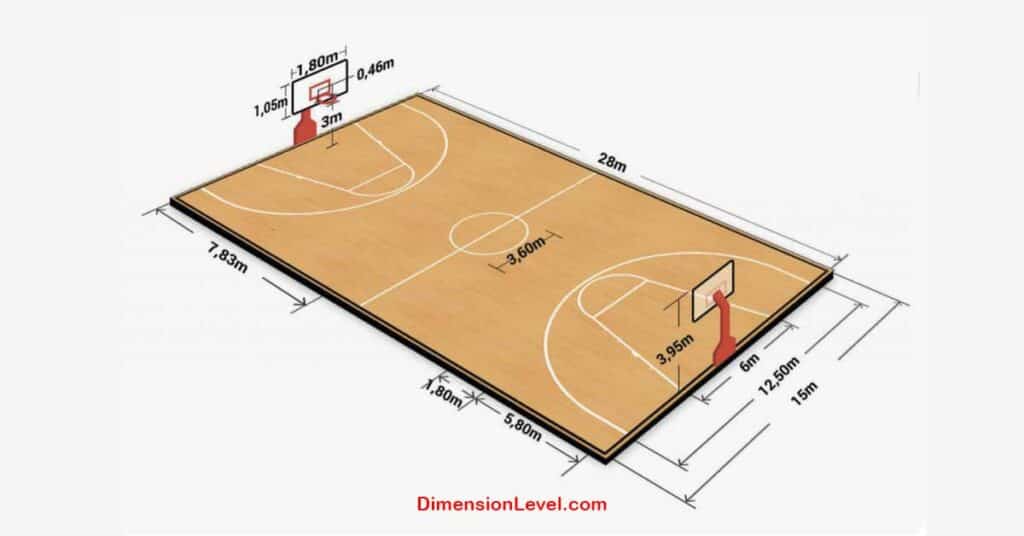
A standard basketball court is 94 feet long. To cover 2 miles, you’d need to run:
- 2 miles = 10,560 feet
- 10,560 ÷ 94 ≈ 112.34 lengths of a basketball court
- 112.34 ÷ 3 ≈ 37.45 laps (rounded to 37)
So, next time you’re shooting hoops, remember that 37 laps around the court is roughly equivalent to a 2-mile run!
You might be Interested How to Read a Tape Measure for Beginners? (The Easiest Way)
2. 32 Times A 100-Meter Dash

The 100-meter dash is the ultimate test of speed in track and field. But how does it compare to 2 miles?
- 2 miles = 3,218.69 meters
- 3,218.69 ÷ 100 ≈ 32.19
You’d need to run the 100-meter dash about 32 times to cover 2 miles. That’s a lot of sprinting!
Fun Fact: World Record Comparison
Usain Bolt holds the world record for the 100-meter dash at 9.58 seconds. If he could maintain that pace for 2 miles (which is humanly impossible), he would cover the distance in about 5 minutes and 8 seconds!
3. 4,000 Walking Steps
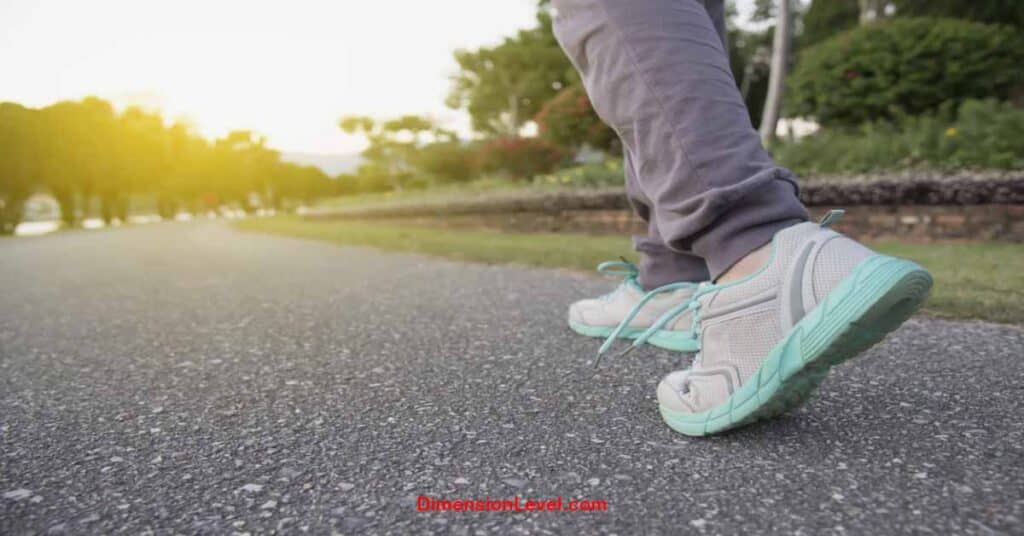
On average, it takes about 4,000 steps to walk 2 miles. This can vary depending on your stride length, but it’s a good rule of thumb. Here’s how it breaks down:
- Average step length: 2.5 feet
- 2 miles = 10,560 feet
- 10,560 ÷ 2.5 = 4,224 steps
So, if you’re aiming for the popular 10,000 steps per day goal, a 2-mile walk gets you almost halfway there!
4. The Length of the National Mall
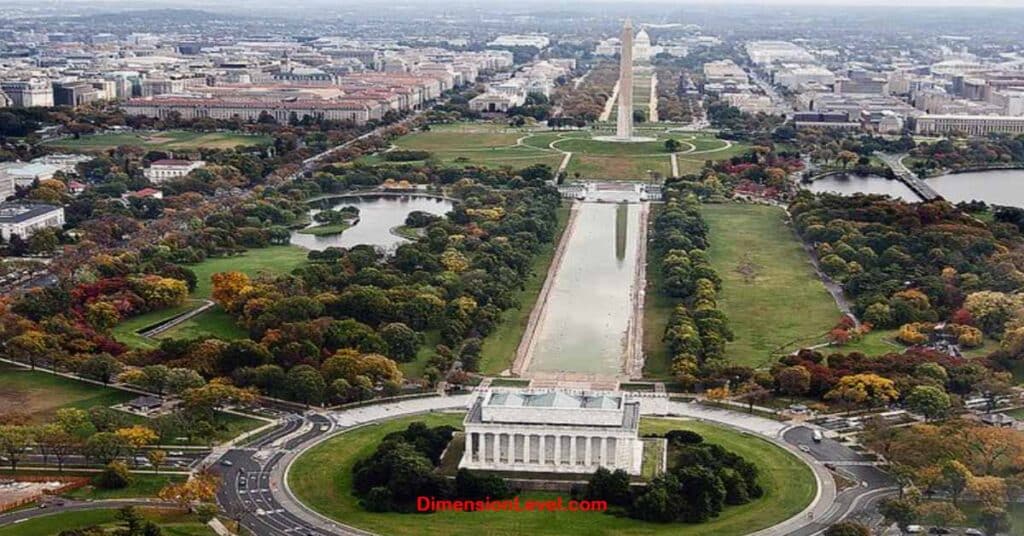
The National Mall in Washington, D.C. is a great way to visualize 2 miles. The distance from the steps of the U.S. Capitol to the Lincoln Memorial is almost exactly 2 miles. Imagine walking past some of America’s most iconic monuments and museums – that’s 2 miles for you!
Historical Significance
The National Mall has been the site of many significant events in American history, including:
- Martin Luther King Jr.’s “I Have a Dream” speech
- The March on Washington for Jobs and Freedom
- Numerous presidential inaugurations
Walking these 2 miles is like taking a stroll through American history!
Explore this 10 Things That Have an Area of 70 Square Meters
5. 64 Swimming Pools

Olympic-sized swimming pools are 50 meters long. To swim 2 miles, you’d need to cover:
- 2 miles = 3,218.69 meters
- 3,218.69 ÷ 50 ≈ 64.37
That’s about 64 lengths of an Olympic pool. Quite a workout!
6. Half the Las Vegas Strip

The famous Las Vegas Strip is about 4.2 miles long. So, 2 miles would take you almost halfway down this dazzling stretch of hotels, casinos, and entertainment venues. Imagine walking from the Welcome to Fabulous Las Vegas sign to about the Bellagio – that’s roughly 2 miles!
Las Vegas Strip Fun Facts
- The Strip is home to 17 of the world’s 20 largest hotels
- Over 42 million people visit Las Vegas each year
- The Strip’s nighttime glow is visible from space!
7. 10 Laps Around an American Football Field
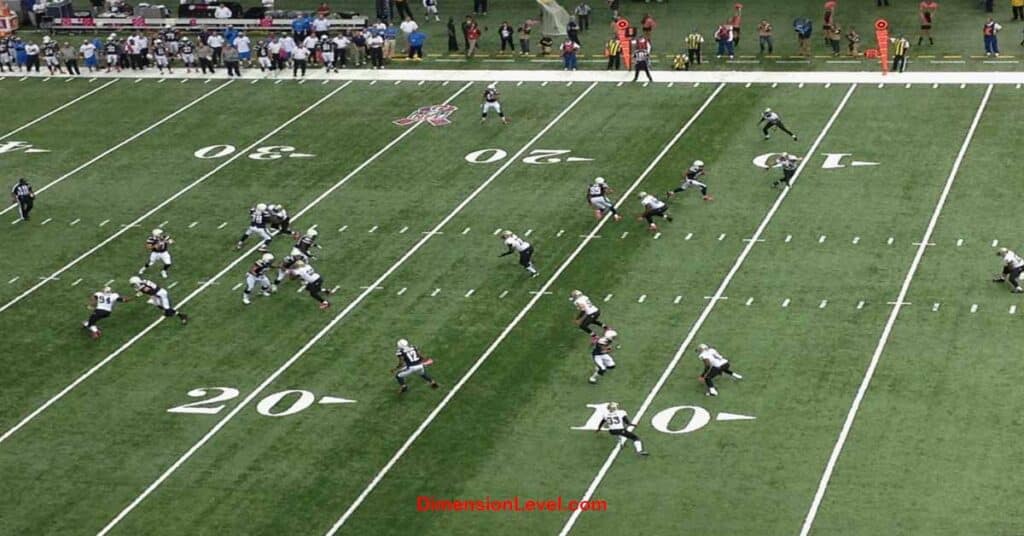
An American football field, including end zones, is 360 feet long. To cover 2 miles:
- 2 miles = 10,560 feet
- 10,560 ÷ 360 ≈ 29.33 lengths
- 29.33 ÷ 3 ≈ 9.78 laps (rounded to 10)
So, 10 laps around a football field will get you pretty close to 2 miles.
8. One Round Trip Along the Brooklyn Bridge

The Brooklyn Bridge is about 1.1 miles long. A round trip across this iconic New York City landmark would be 2.2 miles – just a bit over our 2-mile mark. It’s a great way to visualize the distance while taking in some breathtaking views of the Manhattan skyline!
Brooklyn Bridge History
- Completed in 1883, it was the world’s first steel-wire suspension bridge
- It took 14 years to build
- At the time of its opening, it was the longest suspension bridge in the world
9. 40 City Blocks

In many cities, especially those with grid layouts like Manhattan, 20 city blocks equal about a mile. So, 2 miles would be approximately 40 city blocks. Next time you’re navigating an urban landscape, this can be a handy way to estimate distances.
Read More About A Simple Guide to Understanding the Metric And Imperial Systems
10. 8 Laps Around a Standard Track

A standard running track measures 400 meters per lap. To run 2 miles:
- 2 miles = 3,218.69 meters
- 3,218.69 ÷ 400 ≈ 8.05
So, 8 laps around a standard track will get you almost exactly 2 miles.
The Importance of Understanding Distance
Understanding distances like 2 miles can be incredibly useful in our daily lives. Here are a few reasons why:
- Health and Fitness: Knowing how far 2 mile is can help you set and achieve fitness goals. Whether you’re walking, running, or cycling, having a clear idea of distance can motivate you and help track your progress.
- Time Management: Understanding how long it takes to cover 2 mile by various modes of transportation can help you plan your day more effectively. It can inform decisions about whether to walk, drive, or take public transport.
- Environmental Awareness: Recognizing the impact of short car trips can encourage more sustainable transportation choices. Walking or cycling for trips under 2 mile can significantly reduce your carbon footprint.
- Spatial Awareness: Developing a better sense of distance can improve your navigation skills and help you estimate travel times more accurately.
- Appreciation of Landmarks: Understanding the scale of famous landmarks in relation to 2 mile can enhance your appreciation of their size and significance.
Creative Ways to Cover 2 Miles
Now that we understand how long 2 miles is, let’s explore some fun and creative ways to cover this distance:
- Photo Walk: Take a camera or smartphone and photograph interesting things you see along a 2-mile route.
- Nature Scavenger Hunt: Create a list of natural items to find during your 2-mile walk, like specific types of leaves, flowers, or birds.
- Historical Tour: Research historical sites or buildings along a 2-mile route in your area and learn about local history as you walk.
- Charity Walk: Participate in or organize a 2-mile charity walk for a cause you care about.
- Geocaching: Use GPS coordinates to find hidden caches along a 2-mile route.
- Pokemon Go: Play the popular augmented reality game while covering 2 mile.
- Audio Book Walk: Listen to a chapter or two of an audiobook while walking 2 mile.
- Mindfulness Walk: Practice mindfulness and meditation techniques as you walk, focusing on your breath and surroundings.
Final Thoughts
As we’ve seen, 2 mile is a distance that can be visualized in countless ways. From city blocks to swimming pools, from football fields to iconic bridges, this common measurement takes on new meaning when we look at it creatively.
Next time you’re faced with a 2-mile journey, remember:
- It’s about 4,000 steps
- You could swim it in 64 Olympic pools
- It’s roughly half the Las Vegas Strip
- It’s 37 laps around a basketball court
By understanding and appreciating the significance of 2 mile, we can make more informed decisions about our daily travel, exercise routines, and even our impact on the environment. So, lace up those shoes, start your step count, and see the world in two-mile increments. You never know what you might discover just around the corner!
Frequently Asked Questions (FAQs)
- How long does it take to walk 2 mile? On average, it takes 30-40 minutes to walk 2 mile at a moderate pace of 3 mph.
- How many steps are in 2 mile? Approximately 4,000 steps, though this can vary based on stride length.
- How long does it take to drive 2 mile? In the city, it typically takes 5-10 minutes. On the highway, it’s about 2-3 minutes.
- How many laps around a track is 2 mile? On a standard 400-meter track, 2 mile is about 8 laps.
- Is walking 2 mile a day good exercise? Yes, walking 2 mile a day can provide significant health benefits, including improved cardiovascular health and weight management.
- How many calories does walking 2 mile burn? On average, a person burns about 200 calories walking 2 mile, but this can vary based on factors like weight, speed, and terrain.
- How many city blocks are in 2 mile? In many cities, especially those with grid layouts, 2 mile is approximately 40 city blocks.
- Can you run 2 mile in 15 minutes? Running 2 mile in 15 minutes requires a pace of 7:30 per mile, which is achievable for experienced runners but challenging for beginners.
- How long is 2 mile compared to a marathon? A marathon is 26.2 mile, so 2 mile is about 7.6% of a full marathon distance.
- Is cycling 2 mile the same as walking 2 mile in terms of exercise? Cycling 2 mile typically burns fewer calories than walking 2 mile, but it’s generally quicker and can be less impactful on joints.
Read also How far is 5 km? 9 common comparisons

Deborah Melindah is an experienced blogger passionate about exploring the world of dimensions. With a keen eye for detail and a talent for simplifying complex topics, she shares her knowledge on spatial concepts, measurements, and more. Deborah’s insightful posts make it easy for readers to grasp and apply dimensions in everyday life, whether for personal projects or professional pursuits.

